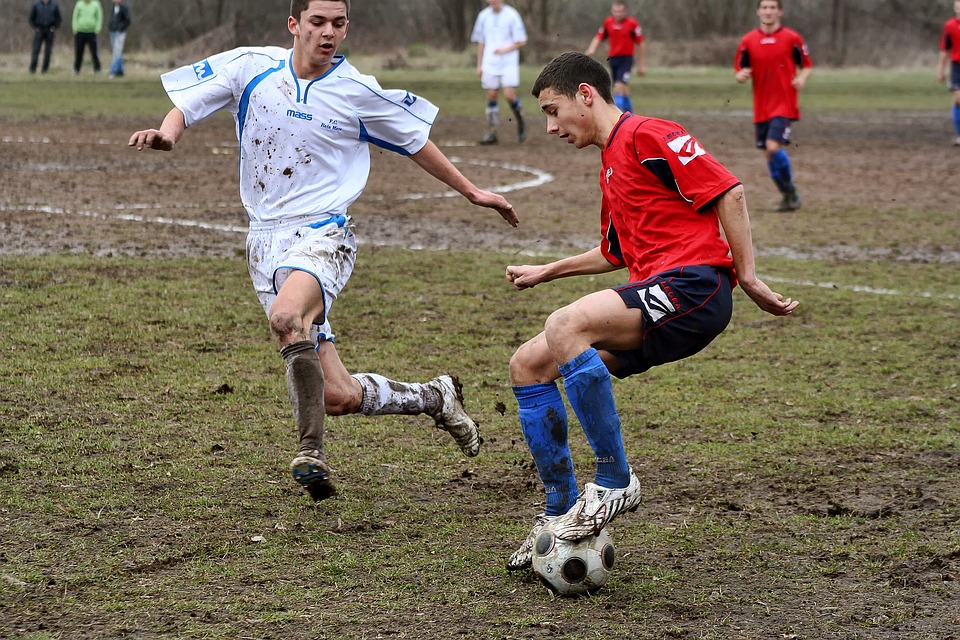

Sports ankle sprain treatment: Getting back on your feet faster
When it’s back to school time, we’re also back to fall or spring sports, gym class, and recess. Summer is also often a time for additional sports activities or neighborhood pickup games. With any physical activity comes the risk of sports related injuries, especially those involved in high-impact sports like basketball, soccer, and tennis. The most common of these is ankle sprains, which in my opinion is usually not treated appropriately. We’ve all heard the advice of “rest it for a few days” or “just wear a brace and get back out there.” Or my personal favorite “just rub some dirt on it.” Whether you’re a weekend warrior or a professional athlete, an ankle sprain can quickly sideline you from your favorite activities. But fear not, with the right treatment and rehabilitation plan, you can bounce back stronger than ever. Now the problem with this advice is that most sprained ankles do feel better after a few days, but that doesn’t mean they are healed.
Understanding sports ankle sprains
Before diving into ankle sprain treatment options, let’s briefly revisit what happens during a sports ankle sprain. Ankle sprains occur when the ligaments that support the ankle stretch or tear, usually due to a sudden twist or turn of the foot. In sports, this often happens during rapid changes in direction, jumps, or collisions with other players.
The most frequent type of “rolled ankle” sprain involves rupturing one of the three ligaments that connects the outside of your ankle to the outside of your foot. If you continue activity as usual on this injury, the torn ends of that ligament continue to move and deteriorate until the normal strong ligament is basically gone. This will not cause much of an issue for normal activity, but can result in a chronic weak point in ankle motion that will cause the ankle to “give out” if the foot is planted in a certain position. It can also cause more severe injuries down the road.
Immediate ankle sprain care
If you’ve recently suffered a sports ankle sprain, immediate care is crucial to minimize swelling and pain. Remember the R.I.C.E. protocol:
- Rest: Avoid putting weight on the injured ankle to prevent further damage.
- Ice: Apply ice packs to the affected area for 15-20 minutes every few hours to reduce swelling.
- Compression: Use a compression bandage to support the ankle and limit swelling.
- Elevation: Keep your ankle elevated above heart level whenever possible to reduce swelling.
Professional evaluation
After the initial injury, it’s essential to seek professional medical evaluation, especially if you suspect a severe sprain or if the pain and swelling persist. Your podiatrist will perform a thorough examination, which may include imaging tests like X-rays or MRI scans to assess the extent of the injury.
Ankle sprain treatment options
When I am treating a recent ankle sprain I will first immobilize the ankle at 90 degrees for two weeks or more depending on its severity. This is typically done using a walking boot. This allows you to remove the boot for sleeping and to ice the ankle regularly. You will also be given instructions on therapy involving gentle moving of the ankle to prevent stiffness. After two weeks the boot comes off and more active physical therapy begins, usually lasting an additional two to three weeks before full activity can be resumed. Here are some common treatment options for sports ankle sprains that we would provide:
- Immobilization: In severe cases, a brace, splint, or walking boot may be necessary to immobilize the ankle and allow the ligaments to heal properly.
- Physical Therapy: A structured physical therapy program can help strengthen the muscles around the ankle, improve range of motion, and restore stability.
- Nonsteroidal Anti-Inflammatory Drugs (NSAIDs): Over-the-counter pain relievers like ibuprofen or naproxen can help reduce pain and inflammation.
- Bracing and Taping: Wearing ankle braces or undergoing athletic taping techniques can provide additional support and stability during sports activities.
- Gradual Return to Activity: It’s essential to gradually reintroduce physical activity once your ankle has healed to avoid re-injury. Your podiatrist or physical therapist can provide guidance on when it’s safe to return to sports and how to prevent future ankle sprains.
Preventive measures
While some ankle sprains are inevitable, there are steps you can take to reduce your risk of injury:
- Warm-Up and Stretching: Always warm up before engaging in physical activity, and incorporate dynamic stretching exercises to prepare your muscles and ligaments.
- Proper Footwear: Invest in supportive athletic shoes designed for your specific sport and replace them regularly to ensure optimal cushioning and stability.
- Strength and Balance Training: Incorporate exercises that target the muscles around the ankle, such as calf raises, ankle circles, and single-leg balance drills, to improve stability and reduce the risk of sprains.
Conclusion
Now, a month or more out of sports activities sounds like a lot, but considering the lifelong pain and instability that can be associated with an under-treated ankle injury, it’s more than worth it. Don’t let a sports ankle sprain keep you on the sidelines for longer than necessary. With prompt and proper treatment, along with preventive measures and rehabilitation, you can get back to doing what you love with confidence and strength. So, if anyone has questions or concerns about a recent or past injury please make an appointment with us and we can talk about how to get you back in the ol’ ball game.
Dr. Anderson is considered one of the top podiatrists or foot doctor in the Fort Collins, Colorado region with over 6000+ subscribers on youtube and thousands of facebook followers it makes sense to consult with him.










Write a comment: